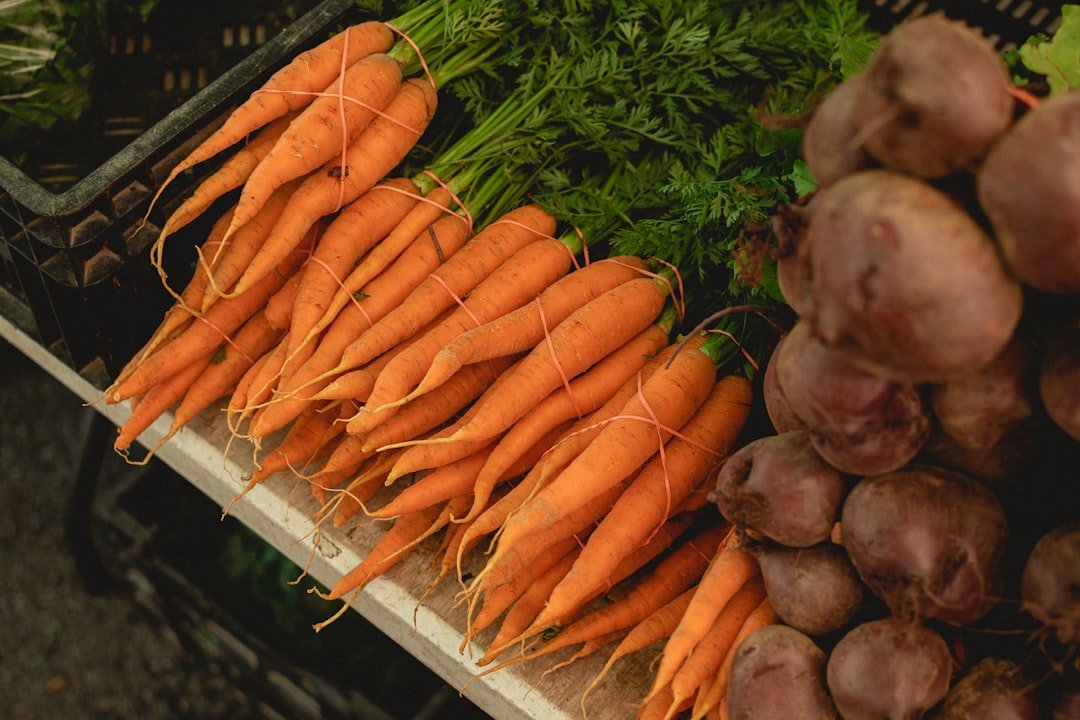There is a long and rich history of sourdough bread that goes back thousands of years. Archaeological evidence for its existence in ancient Egyptian hieroglyphs suggests that it is one of the earliest types of leavened bread. Sourdough bread has a distinct flavor and texture because it is made by fermenting dough with naturally occurring yeasts and bacteria.
Key Takeaways
- Sourdough bread has a long history and is made through a process of fermentation using wild yeast and bacteria.
- The microorganisms in sourdough play a crucial role in the fermentation process, creating the unique flavor and texture of the bread.
- The essential ingredients for making sourdough bread include flour, water, and salt, with variations possible through the use of different flours and additions like seeds or herbs.
- Mastering the techniques of kneading, shaping, and scoring is key to achieving the perfect rise and crumb structure in sourdough bread.
- Troubleshooting common problems like a lack of rise or a dense crumb can be addressed through adjustments to the fermentation process or changes to the recipe.
The sour flavor of sourdough bread is what gives it its name. The lactic acid generated during fermentation is what gives this food its sour taste. In addition to having a longer shelf life than other bread varieties, sourdough bread gets its distinctive chewy texture from the fermentation process. As different microorganisms interact during the fermentation process, sourdough bread is created.
This is a complex biochemical reaction. These microbes, which are found on the surface of grains and in the environment naturally, include lactic acid bacteria and wild yeasts. Carbon dioxide gas is produced as a byproduct of the wild yeasts’ consumption of the dough’s sugars during fermentation. The dough rises because of this gas, which also gives the bread its fluffy texture. On the other hand, the lactic acid produced by the lactic acid bacteria gives the bread its sour flavor.
Sourdough bread differs from other types of bread because it contains these microorganisms. One type of yeast that yields a more consistent rise and flavor is called commercial yeast, & it is frequently used to make bread. On the other hand, the wild yeasts in sourdough bread can differ based on the surroundings & the kind of flour utilized, giving the bread a more intricate and distinct flavor profile.
The following are necessary ingredients for making sourdough bread:1. Flour: The kind of flour used to make sourdough bread has a big impact on the final product’s flavor and texture. Bread flour, whole wheat flour, & all-purpose flour are among the frequently used varieties of flour. It’s worthwhile to try a variety of flour types to determine which one best suits your preferences because each type has distinctive qualities of its own. 2.
Water: As the element that keeps the fermentation process hydrated, water is essential to making sourdough bread. Chlorine & other chemicals can hinder the growth of microorganisms, so it’s crucial to use clean water. 3. Salt: Adding flavor to bread, salt also aids in controlling the fermentation process. It assists in regulating the activity of the bacteria and yeast, preventing an excessively rapid or slow fermentation of the dough. 4.
Sourdough bread is fundamentally made with a starter. It is a blend of water and flour that has undergone fermentation using bacteria and wild yeasts. The starter gives the bread its leavening power & gives the finished product more flavor and complexity. It takes skill to master the methods of kneading, shaping, & scoring bread in addition to knowing the ingredients. 1. The process of working the dough to develop gluten, which gives bread its structure and elasticity, is called kneading. You can knead the dough with your hands or a stand mixer fitted with a dough hook attachment.
It is necessary to knead the dough until it is elastic and smooth. 2. Shaping: A properly-formed loaf begins with the dough being shaped. Sourdough bread can be shaped in a variety of ways, such as the oblong batard shape or the round boule shape.
In order to create tension on the surface and help the bread maintain its shape while baking, it is important to gently stretch and fold the dough. Three. Making shallow incisions on the dough’s surface before baking is known as scoring. This produces a more even rise and a gorgeous crust by allowing the bread to expand & release steam while baking. To make the cuts, use a bread lame or a sharp knife.
It can be difficult to get the ideal rise & crumb structure in sourdough bread, but you can increase your chances with a few pointers & techniques. 1. Use a ripe starter: A ripe starter has plenty of live yeast and bacteria and has reached the peak of fermentation. Your bread will rise strongly & have a nice crumb structure if you use a ripe starter. 2. Let the dough rise to a sufficient temperature: Compared to bread made with commercial yeast, sourdough bread requires a longer fermentation period. This lets the wild yeasts and bacteria grow to their full potential & produce the flavor and texture that you want. Give your dough enough time to rise, even if it takes longer than you anticipated.
Have patience. Three. Make sure the temperature is appropriate: The fermentation process depends heavily on temperature.
For sourdough bread, 75°F (24°C) is about the ideal temperature. You can change the fermentation time based on how warm or cold your kitchen is. Another way to achieve the perfect temperature is by using a proofing box or a warm spot in your kitchen. 4.
Softly handle the dough: If sourdough bread dough is handled too roughly, it can easily lose its structure. To prevent the dough from deflating, handle it gently when shaping and transferring it to the baking vessel. 5. While baking, use steam: This will help your sourdough bread bake with a crisp, shiny crust. A pan of hot water placed on the bottom rack or a spray bottle filled with water used to mist the interior of the oven will both produce steam. Playing around with different flavors and textures is one of the delights of making sourdough bread.
You can try the following variations: 1. For a denser texture and a nuttier flavor, use whole wheat flour in place of all-purpose flour when making sourdough. 2. Rye sourdough: Rye flour gives sourdough bread a unique flavor and a deeper hue. It works well both by itself and in combination with other flours. 3. Seeded sourdough: A bread’s texture and flavor can be enhanced by incorporating seeds, like sesame, poppy, or sunflower seeds, into the dough. 4.
Olive sourdough: This savory, tart bread can be made by incorporating chopped olives into the dough. When baking sourdough bread, even seasoned bakers run into difficulties. The following are some typical issues and their solutions:1. Dense bread: Underproofing or using too much flour can result in a dense crumb. Make sure you use the right amount of flour and give your dough enough time to rise. 2.
Lackluster yeast activity may be the cause of your bread’s uneven rise and flat texture. Prior to utilizing it in your dough, make sure your starter is robust and active. 3. Gummy crumb: Underbaking or using too much water in the dough can both lead to gummy crumb. Aim for an internal temperature of about 200°F (93°C) for your bread, and adjust the hydration of your dough if necessary. 4. Sourness overload: Overfermentation may be the cause of your bread’s excessive sourness.
To manage the sourness, shorten the duration of fermentation or modify the temperature. Storing and preserving sourdough bread properly is crucial to preserving its freshness and quality. These are some pointers:1. Store at room temperature: Paper bags or bread boxes work well for storing sourdough bread at room temperature.
To keep the crust from getting too soft & chewy, don’t store it in plastic bags. 2. To store bread for a longer period of time, freeze any extra that you won’t be using right away. Before freezing the bread, slice it and cover it tightly with aluminum foil or plastic wrap. When necessary, thaw the slices. 3. To revitalize stale bread, lightly mist it with water and reheat it in the oven for a brief period of time.
This can help bring back the softness of the bread and revitalize the crust. Bread made from sourdough can be used in many different recipes, not just sandwiches. Here are some recipes you should try:1.
French toast made with sourdough: To make a flavorful and tart French toast, use thick slices of organic bread. It makes a delicious breakfast when served with fresh berries and maple syrup. 2. Sourdough grilled cheese: Melted cheese and the tart flavor of sourdough bread go together wonderfully. Choose your favorite cheese to make a traditional grilled cheese sandwich, then savor the gooey center and crispy crust. Three. Stale sourdough bread cubes can be used to make a tasty and refreshing bread salad by combining them with fresh vegetables, vinegar, and olive oil.
To make a meal, add some grilled shrimp or chicken. Making sourdough bread offers the chance to connect and share with others, which is one of its most fulfilling aspects. The following advice will help you share sourdough bread:1. Give bread as gifts: Make a few extra sourdough loaves and distribute them to neighbors, family, and friends. The recipients will value the thoughtfulness of the gesture. 2.
Organize a bread-baking party: Call your loved ones or acquaintances over. Enjoy baking with others while imparting your skills and expertise. Three. Join a baking community: Sourdough bread baking is the focus of numerous online forums and communities.
By becoming a member of these groups, you can get access to a forum for asking questions, sharing experiences, and learning from others. In summary, sourdough bread has a long history, distinctive qualities, and is a tasty & intriguing bread variety. You can make the ideal loaf of sourdough bread for yourself by learning the science behind sourdough, perfecting the techniques, and experimenting with flavors and textures. Also, remember to spread the joy of baking to others because sourdough bread has the ability to unite people and foster relationships.










